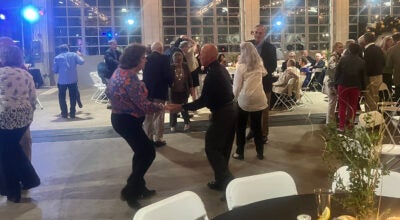Published 12:00 am Tuesday, June 26, 2012
By Hugh Fisher
hfisher@salisburypost.com
Summer is upon us.
Bright, sunny days bring a lot of opportunities to enjoy the outdoors, whether splashing about in the water or sunning on the lawn.
But for those who indulge in fun in the sun, or who work out in the heat, those rays can be harmful.
Even life-threatening.
Carolinas HealthCare spokesperson Kevin McCarthy, a Milwaukee native, has lived in North Carolina for 25 years.
“It’s a bit early yet” for there to be many heat-related emergency room visits or hospital admissions, he said.
But those who don’t respect the heat can find themselves in danger, even in the first week of summer.
Contrary to what you might think, those who are most at risk aren’t usually regular outdoor workers, but those who aren’t used to being outside on a scorching day.
Most companies whose workplace is outside — roofers, lawn-care professionals and the like — know how to stay healthy in the heat.
Tom Speaks, owner of Speaks Custom Windows, said his workers are prepared when they work outside on hot days.
They have a tent canopy to provide shade, Speaks said, “and there’s plenty of water.”
He also encourages workers to wear hats to keep heat off the scalp.
Earl Passmore, of Earl’s Lawn Care in Salisbury, said he adjusts working hours on hot days, starting about 6:30 a.m., as soon as there’s enough light.
“You take it slow and easy. Drink water, plenty of water,” Passmore said.
“And take plenty of breaks, slow down a bit.
Passmore said he’s been in the lawn care business for nine years, and that this is a mistake made by those who aren’t used to working outdoors.
Trying to do too much physical activity in the heat can lead to exhaustion for someone who’s not used to those conditions, he said.
Warning signs
And the consequences can be serious.
When your body overheats, the first symptom is usually heat cramping.
According to the Mayo Clinic, heat cramps are involuntary muscle spasms caused when the body begins to overheat during physical exercise.
Leg, arm and abdominal muscles are most often affected, and the pain can be severe.
That’s your body’s way of telling you to slow down and cool down.
With or without cramps, heat exhaustion can occur due to a combination of high temperature, high humidity and strenuous activity.
In an effort to cool itself, your body may start to sweat profusely, and the heart rate can become rapid.
If that doesn’t work, and the heating continues, a physical breakdown can occur: heatstroke.
The Mayo Clinic defines heatstroke as having a body temperature of 104 degrees or above.
Young children, the elderly and those with other illnesses are more prone to heatstroke.
Nausea, fainting and vomiting can result.
And the high temperatures can damage your heart, muscles, kidneys and brain.
Many people prefer sports drinks to water, not just for flavor but because they can restore sodium and electrolytes.
Though salt tablets are not recommended, it is important to keep your body’s electrolytes in balance when you’ve been working or playing hard in the heat.
There’s some debate over whether sports drinks are the right choice to do that.
For most of us, water — the original “thirst quencher” — is the best choice.
Plus, while some sports drinks have lots of electrolytes and may be enriched with vitamins, others — particularly off-brands — are often just colored, flavored sugar-water.
Even so, sports website Active.com promotes sports drinks for athletes, saying they get electrolytes and carbohydrates to the muscles quickly and efficiently.
Sports drinks “do a better job of allowing the body to maintain optimal fluid balance, which is an important aspect of hydration that few athletes consider,” according to Active.com.
The Mayo Clinic website also suggests sports drinks for exercise-related dehydration, but adds that water is usually sufficient.
But for children who become dehydrated, whether from heat or illness, an oral solution such as Pedialyte is the best choice because it is formulated for their bodies’ needs.
Enjoy the warmth
Aside from age and general health, just spending time in a warm climate is enough to help the body cope with summer heat.
McCarthy said that those who are used to places where air conditioning isn’t needed, McCarthy said, the first few summers here might be difficult.
Still, “with Charlotte being in the south, people usually adapt to the heat,” he said.
“You’d be amazed at how people who live here are acclimatized to it.”
That, and most buildings here are well-cooled, giving locals plenty of refuge from the heat.
Again, McCarthy said caregivers need to make sure that the elderly and small children have plenty of cool air.
“But for most people, a typical summer day in Charlotte when it’s going to be in the lower 90s isn’t going to be a problem,” McCarthy said.
For the record, McCarthy said he understands why summer in the Carolinas is so much fun.
“I love hot weather,” he said. “I’d take 90s every day instead of 20 below. You don’t have to shovel humidity,” he said.
Contact Hugh Fisher via the editor’s desk at 704-797-4244.




